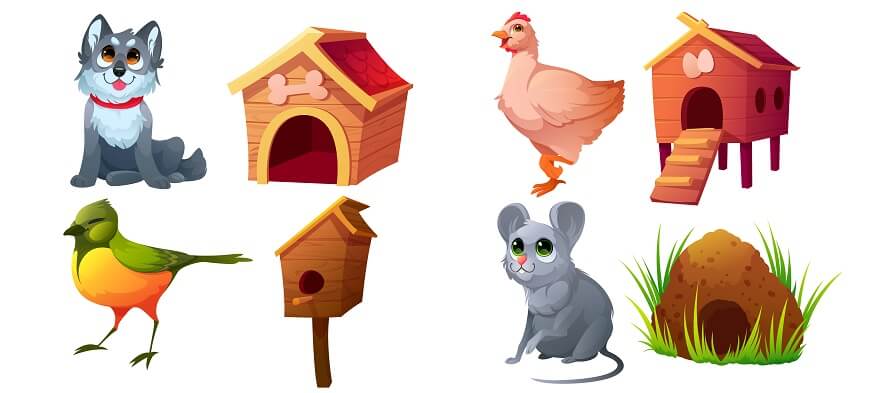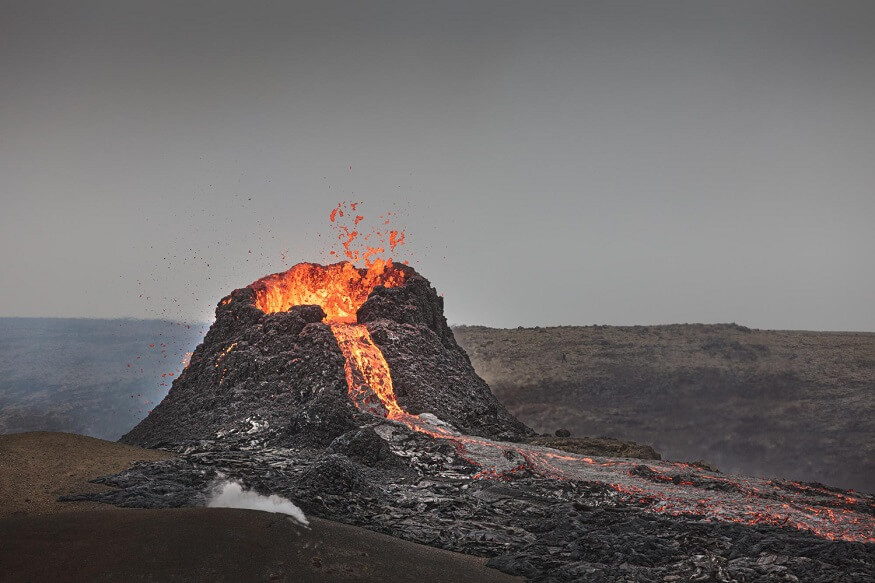The homes of animals vary greatly depending on the species. Some homes of animals are made in burrows or dens in the ground, while other homes of animals are in trees, water, or even in the air. Many animals and their shelters are in habitats that suit their particular needs, such as the ocean, rainforests, grasslands, deserts, or Arctic Tundras. Some animals and their shelters are also built by themselves, such as beavers who construct dams and lodges, or birds who create nests in trees or on the ground. Additionally, some animals are domesticated and live in human-made homes or structures. Ultimately, the homes of animals are where it finds shelter, food, water, and safety to survive and thrive.
Some animals may not necessarily have a specific type of home or may adapt to different types of environments based on their natural habitat or geographical location. Additionally, some animals, like migratory birds or marine animals, may not have a permanent home and may move around to different locations throughout the year. It is important to note that animals and their homes are dependable on various things. The specific type of home an animal has can vary depending on the species, habitat, and individual preferences. Listed below are some details of the homes of animals both wild and domesticated.
List of Animals and their Homes (Wild)
- Lions – Lions typically live in grasslands and savannas in Africa. They live in groups called pride and have dens where they rest during the day and sleep at night.
- Elephants – Elephants live in savannas and forests in Africa and Asia. They move in herds and live in large groups called clans. They don’t have a specific type of home, but they will often create shelters out of trees and brush.
- Bears – Bears live in forests and mountains in various parts of the world. They create dens by digging into the ground or finding a sheltered area in a cave or under a tree.
- Penguins – Penguins live in cold, rocky areas near the ocean, such as Antarctica. They create nests out of pebbles and stones to protect their eggs and young from the cold and harsh winds.
- Gorillas – Gorillas live in forests in Africa. They build nests out of leaves and branches on the ground or in trees to sleep in at night.
- Wolves – Wolves live in forests and plains in various parts of the world. They create dens in the ground or in caves to raise their pups and rest during the day.
- Snakes – Snakes live in a variety of environments such as deserts, forests, and grasslands. They may use burrows, rock crevices, or other sheltered areas as their homes.
- African elephants – African elephants live in the savannas, grasslands, and forests of Africa. They move in herds and do not have a specific type of home, but they create shelters out of trees and brush.
- Bengal tigers – Bengal tigers live in the forests and grasslands of India, Bangladesh, and Nepal. They have a large territory that they defend, and they often make dens in dense vegetation or rocky outcroppings.
- Chimpanzees – Chimpanzees live in the forests of Africa. They build nests in trees to sleep in at night and for daytime naps.
- Emperor penguins – Emperor penguins live in the Antarctic, where they breed during the winter months. They huddle together to keep warm and take turns incubating their eggs on their feet while the others go out to fish.
- Polar bears – Polar bears live in the Arctic, where they hunt on ice floes. They dig dens in the snow or find shelter in rocky outcroppings.
- Kangaroos – Kangaroos live in Australia and have adapted to live in a variety of habitats, from forests to grasslands. They create burrows, called warrens, in the ground to rest in.
- Koalas – Koalas live in eucalyptus forests in Australia. They sleep in trees, often on the fork of a branch or in a hollow of a tree trunk.
- Wolves – Wolves live in forests and plains in various parts of the world. They create dens in the ground or in caves to raise their pups and rest during the day.
List of Animals and their Homes (Domestic)
- Dog: Dogs are usually kept in a house or a kennel, where they have access to shelter, food, water, and a comfortable bed. Some dogs are kept outdoors in a fenced yard.
- Cat: Cats are usually kept indoors in a house or apartment. They require a litter box, a scratching post, and access to food, water, and toys.
- Rabbit: Rabbits are usually kept in an indoor hutch or a cage with bedding, food, water, and toys. They also need daily exercise and access to a secure outdoor play area.
- Guinea pig: Guinea pigs are usually kept in an indoor hutch or cage with bedding, food, water, and toys. They also need daily exercise and access to a secure outdoor play area.
- Hamster: Hamsters are usually kept in an indoor cage with bedding, food, water, and toys. They like to spin using a wheel.
- Bird: Birds are usually kept in a cage indoors, with perches, food, water, and toys. They also need daily exercise and playtime outside of their cage.
- Fish: Fish are kept in an aquarium or fish tank, with a filter, heater, and appropriate water conditions.
- Turtle: Turtles are kept in an indoor or outdoor enclosure with access to water, basking areas, and appropriate lighting and temperature.
- Horse: Horses are kept in a stable or barn with access to pasture, water, and food. They also require daily exercise and grooming.
- Cow: Cows are usually kept in a barn or pasture with access to food and water.
- Goat: Goats are usually kept in a barn or pasture with access to food and water.
- Chicken: Chickens are usually kept in a coop with access to food, water, and nesting boxes.
- Duck: Ducks are usually kept in a coop or pen with access to water, food, and shelter.
- Goose: Geese are usually kept in a coop or pen with access to water, food, and shelter.
- Bee: Bees are kept in a hive, which can be located indoors or outdoors, with access to nectar and pollen.
Enrol your child with EuroSchool today!











